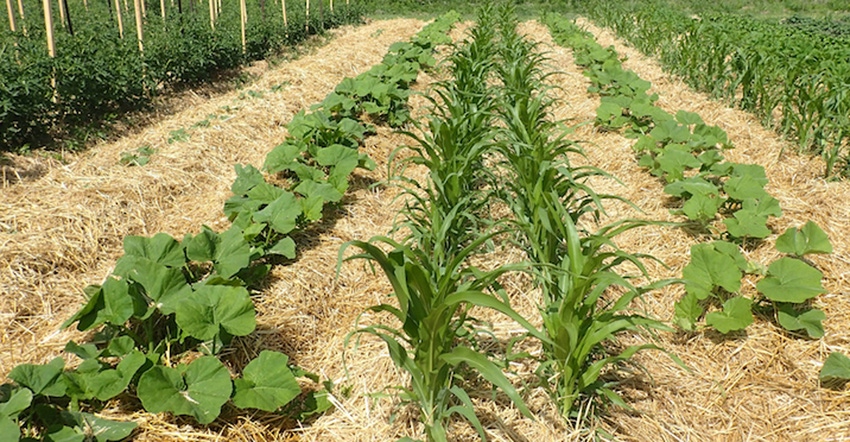April 4, 2018

By Amanda Kautz
When most people think about soil health practices, they picture a large row crop farm. There are many applications of the same practices on small and urban farms. These farms are part of the fastest-growing agricultural sector.
With small acreage or a plot measured in square feet, it’s even more important to keep soil healthy and productive. Cover crops, no-till, mulching, nutrient management and pest management look a little different on a smaller scale, but they serve the same purpose on all farm sizes. They improve soil health!
Here are ideas to incorporate soil health practices into your small farm or home garden.
For a small-acreage farmer, crop rotation is much more intense and diverse than a typical larger farm’s corn-soybean rotation. A smaller farm’s rotation likely includes early-, mid- and late-season crops. This rotation allows for the opportunity to plant cover crops in the summer as well as the fall.
An example to consider is planting buckwheat between early- and late-season vegetable crops. Adding a cover crop during this time will help suppress weeds, prevent soil erosion and add extra diversity to the crop rotation. An added advantage of buckwheat is that it scavenges phosphorus for use by the next cash crop. Once it’s terminated, buckwheat residue will decompose in about two weeks, releasing nutrients to the newly planted cash crop.
Another example
Once you feel comfortable using cover crops, combining them with reduced tillage or no-till is a great soil health combination on any size farm. An oat-daikon radish mixture is a good early fall and winter cover crop to help with the transition to reducing tillage. This mix can be planted until about five weeks before the first frost, so it can easily follow crops such as peas, potatoes and broccoli.
This mixture will winter-kill after a few hard frosts, so there is no need to control it in the spring. At planting, the residue can be strip-furrowed for seeded crops, or seedlings can be directly transplanted into the soil. Additional mulch may need to be applied to the soil surface to keep weeds suppressed after planting in a reduced-tillage or no-till situation. The rule of thumb is that a layer of mulch about 4 inches deep is needed for good weed control.
These two examples are just a drop in the bucket. There are many combinations and ways to customize cover crops and other soil health practices to fit into your existing system. If you have been considering trying a soil health system but are nervous about making the transition, try it on one small area of the farm. This will help you gain the comfort level and knowledge to make the leap and transition a larger area — maybe even the whole farm.
Kautz is a district conservationist with the Natural Resources Conservation Service. She writes on behalf of the Indiana Conservation Partnership.
You May Also Like




